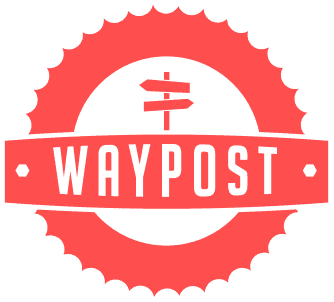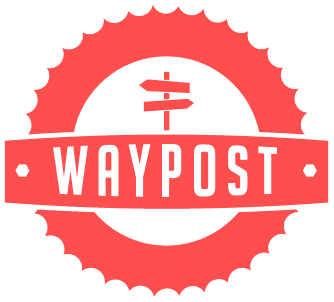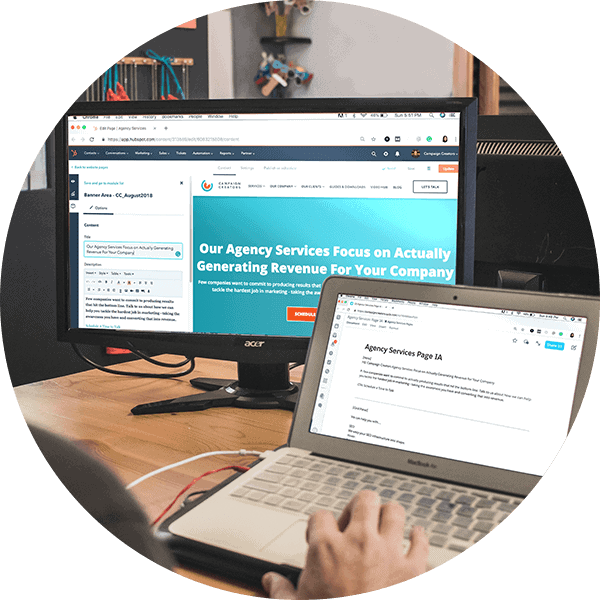
Why Are My Google Ads Not Working? Top Troubleshooting Tips for Paid Search
October 29, 2024
PPC Analysis: How to Make Sense of Your Reports
November 5, 2024Imagine you’re at a trade show, standing in front of your company’s booth. Your innovative and cutting-edge product is designed to solve a specific problem. Attendees start to walk by. They are intrigued. This is your product, and you excitedly start explaining everything about it. But then you notice something. Their eyes glaze over. You can see they’re struggling to grasp how powerful your solution is. Before you know it, they thank you politely and leave. Bummer!
This challenge is familiar to anyone marketing complex B2B products. You know the value of what you’re offering, but how do you communicate it clearly without losing potential buyers? The answer is a well-thought-out, research-based, and tech-enabled B2B digital marketing strategy.
This might sound complex, too. To make it easy to understand and practical, we’ve broken this process down into five steps that form the backbone of a B2B digital marketing strategy. Follow this framework, and you’ll be better equipped to market even the most complex B2B products.
The 5 Steps of Developing A B2B Digital Marketing Strategy
Step 1: Do Your Research
To effectively communicate your complex B2B product, you need to know who you’re talking to. This is why researching your competitive landscape and, more importantly, your target audience is the first step and the foundation of any successful B2B marketing strategy. Preaching to the wrong people, or talking to them in a way that isn’t relatable will get you nowhere.
In your research, you need to define the audiences’ roles (e.g., engineers, procurement teams, CEOs, CTOs, marketing managers, etc.), but also go beyond surface-level demographics and job titles. At the very least, you must understand your audience’s pain points, challenges, objections, and what they need to know to make a confident buying decision. This step is crucial to ensuring your message resonates, helping you avoid losing your audience in the complexity of your product along the way.
At Waypost Marketing, we tackle this through our Discovery Project — a systematic process where we dive into your company’s story, offerings, positioning, and target audience. We typically collect these insights through in-depth interviews with our clients, but if you can’t interview your potential customers, there are three other approaches you can try:
- Reflect on why you started your business. What problem were you solving, and what drove you to find that solution? What you felt back then might be what your audience feels today.
- Review your client history. Analyze patterns in past customer relationships, including their profiles, needs, common questions, and how they engaged with your solutions.
- Observe your competitors if you’re just starting out and don’t have historical data. Who are they targeting, and how?
Step 2: Create A Long-Term Lead Nurturing Strategy
Once you’ve identified your target audience, the next step is determining how to communicate with them effectively. Given the long and nuanced nature of the B2B customer journey, marketing complex B2B products requires a strategic approach to lead nurturing. Your potential clients need time to fully grasp your value proposition, build trust in your expertise, and feel confident in their investment. This isn’t a sprint. It’s a marathon.
Developing a comprehensive B2B content marketing strategy that engages prospects across multiple channels and touchpoints is key to successful lead nurturing. Relatable and personalized content should guide them naturally from awareness through consideration to decision, providing valuable insights at each stage of the sales funnel. By maintaining consistent messaging over time, you gradually build the credibility and trust necessary for conversion.
To implement this effectively:
- Review the findings from your initial research to identify the best channels for reaching your audience. Whether it’s LinkedIn, email newsletters, industry publications, or webinars, choose platforms where your prospects already spend their time. Then, determine how frequently you should engage them to keep your message top of mind.
- Invest in marketing automation software to streamline your long-term marketing activities. With automation, you can send personalized email sequences, schedule content posting, gather customer data, and track your performance. The benefits of marketing automation are significant! For more ideas, check out our comprehensive guide on marketing automation for manufacturers.
Step 3: Write to Simplify
Remember the tradeshow scenario where a technical presentation left the audience confused and disengaged? This is a common pitfall for B2B companies, who tend to present their story in a complex, overwhelming way. It’s understandable — you know your product inside and out, and it’s easy (even tempting) to dive into the smallest details. But people lose interest when they read or listen to information they can’t understand or relate to. Therefore, the question becomes: How do I simplify this message while still showing the value?
You need to break down complex ideas into easily digestible concepts across all your marketing channels to reach your audience’s hearts and minds. The goal isn’t to oversimplify but to make the product’s value more accessible and meaningful to decision-makers who may not share your technical background.
Good B2B content marketing has to be easy and clear, yet informative. Here are four tips for you to get started:
- Put Yourself in Your Audience’s Shoes: If you’ve conducted thorough research, you should understand your audience’s concerns and needs. Use these insights to frame your message in terms that resonate with their daily challenges and objectives rather than focusing on what you want to tell them.
- Avoid Fancy Jargon: Industry terms have their place, but overusing them can create barriers to understanding and a sense of distance. When technical language is necessary, provide clear context or simple explanations to keep your message accessible.
- Emphasize Benefits over Features: While engineers and CTOs may appreciate detailed spec sheets, others—like CEOs—might find them overwhelming and dismiss them entirely. In fact, most stakeholders care more about outcomes than technicalities. So, instead of listing technical capabilities, focus on concrete business benefits. For example, rather than detailing your software’s processing speed, highlight how it reduces operational costs by 30% or cuts processing time in half. This approach answers the question, “What’s in it for me?” Remember: features tell, benefits sell.
- Utilize Visual Content: Complex concepts become clearer through visual aids like infographics, product demo videos, and 3D models. These tools help bridge the gap between technical specifications and practical applications, making your message more engaging and memorable.
Step 4: Spice Up Your Content with Unique Perspectives
While simplifying complex concepts is crucial, this is not what’s going to make your content special. Now it’s the time to add that extra layer that sets you apart — your unique perspective and experience that help your message stand out in a crowded marketplace.
Do you have some insider tips to share? Worth telling stories from encounters with clients? Lessons from failures and successes? Industry insights or pieces from your personal journey that have shaped your company’s evolution? These elements should shine through your content. Remember, while people may be attracted to your product’s capabilities, they ultimately choose to do business with people (especially in B2B).
Bringing a personal approach into your content serves two critical purposes:
- It helps cut through the noise in an increasingly competitive B2B landscape where generic, technical content alone won’t capture attention.
- It aligns with modern search engine algorithms that favor authentic, experience-rich content. By sharing your unique perspectives and real-world expertise, you not only make your content more engaging but also improve its visibility in search results.
You are an expert in what you do – don’t hesitate to show it.
Step 5: Implement, Track, and Optimize
Once all your pieces are in place and the strategy is ready to launch, it’s time to hit the “go” button. But your work doesn’t end there. Just as your product may have evolved based on user feedback, marketing works the same way. In this case, however, you’ll be delving into marketing analytics to assess performance.
B2B companies can benefit from data-driven marketing in multiple ways, but ultimately, the better the customer experience you provide, the higher the return on investment. This is only achievable by using data to guide decisions and optimize your marketing efforts.
Numerous tools are available to help monitor your marketing effectiveness, such as Google Analytics, Google Search Console, heatmaps, Semrush, and HubSpot, to name a few. Some are more comprehensive than others, but all can generate valuable reports that provide insights for improvement. For example, if your monthly newsletter suffers from a low open rate, you should try crafting more compelling subject lines. Or, if your paid ads aren’t getting enough views, you may need to target different keywords. Remember, your B2B digital marketing strategy is a living document. Be prepared to make adjustments as often as needed to ensure continuous improvement.
Marketing Complex B2B Products in Action — Meet Leadec
Earlier, we emphasized how B2B companies can enhance their marketing by drawing from their experience to make it clearer and more relatable. That’s why we’d like to introduce Leadec, a leading service provider for manufacturing companies. With a wide, diverse, and highly technical range of services, explaining everything in a few words is nearly impossible.
Our collaboration with Leadec followed all the steps outlined above:
- We identified the exact personas Leadec aimed to attract.
- Based on these insights, we transformed their website content and structure to better align with those distinct personas.
- For long-term, multi-channel lead nurturing, we:
- Launched a strategic paid search campaign that directly targeted potential customers.
- Launched a more personalized LinkedIn ad campaign, ensuring messaging reached relevant industry professionals.
- Set up automated, personalized email workflows to engage leads based on their specific stage in the buyer’s journey.
- To showcase Leadec’s unique expertise, we created downloadable case studies highlighting their success in key industries.
- We tracked Leadec’s marketing performance across all channels, and continue to do so.
Check out how this marketing strategy played out for Leadec in the full case study.
When Marketing B2B Products, Turn Complexity into Clarity
Remember that overwhelmed audience at the tradeshow? With a B2B digital marketing strategy focused on clear, value-driven communication, that same complex product presentation could have been a compelling story that resonates and drives action. The key is remembering that behind every technical product, there are real people, selling to real customers, who are looking for solutions to real challenges.
Ready to make your complex B2B product easier to understand and market? At Waypost Marketing, we specialize in helping manufacturers and other B2B companies transform their expertise into compelling marketing messages. Contact us today to start the conversation.








